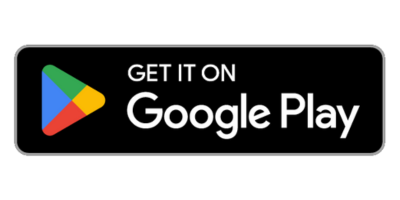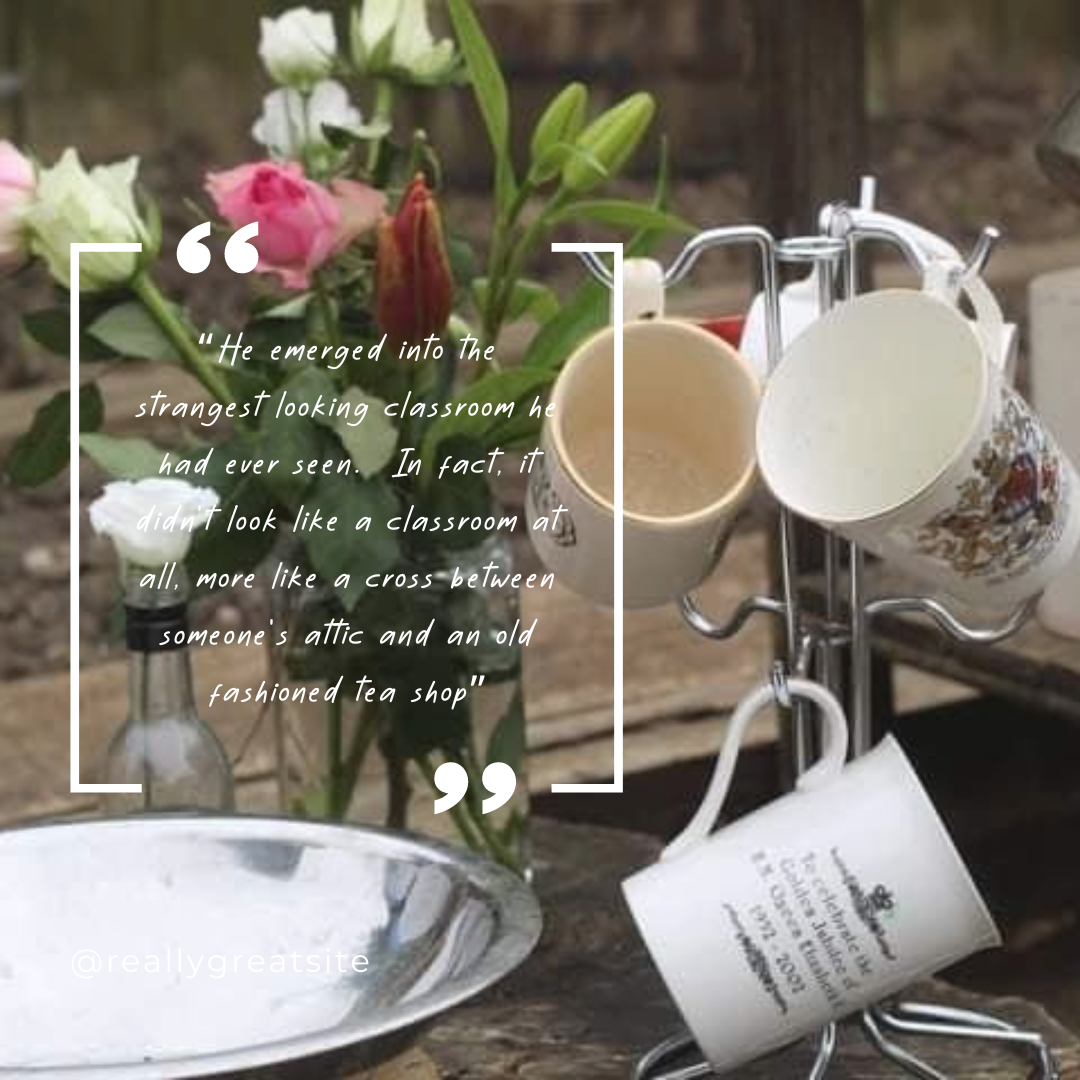
This excerpt from a Harry Potter novel by J.K. Rowling describes a Hogwarts classroom and sounds like a bit of a dream. Shouldn't all classrooms be in a setting that is an enchanting place, just waiting for children to engage?
Designing enchanting places for children is not just about the look of the room, but also about the feelings or emotions of the space. The first place that our precious little ones inhabit outside their homes should offer not only a comfortable, safe place to nest, it should honor each child and wrap the young learner in a warm embrace while simultaneously igniting their senses with wonder and awe. That is what should be happening, but quite often it is not.
- Have you ever noticed the kitchen sink or actually the lack of a sink in the space where one should be?
- Doesn’t this make you wonder what kind of message this example of “homeliving” is imprinting on our children?
The walls of classrooms are littered with lifeless, business style bulletin boards holding nothing at all or cluttered with outdated documents for adults posted as “parent boards”. Or it might be a chaotic duplication of children's artwork littering the cork board with each piece looking exactly the same, creeping up every available space and covering all of the wall.
We must ask ourselves;
In order for classrooms to “not look like classrooms at all” we need to break the mold, and start fresh with a clear vision. It is time to revolutionize our space.
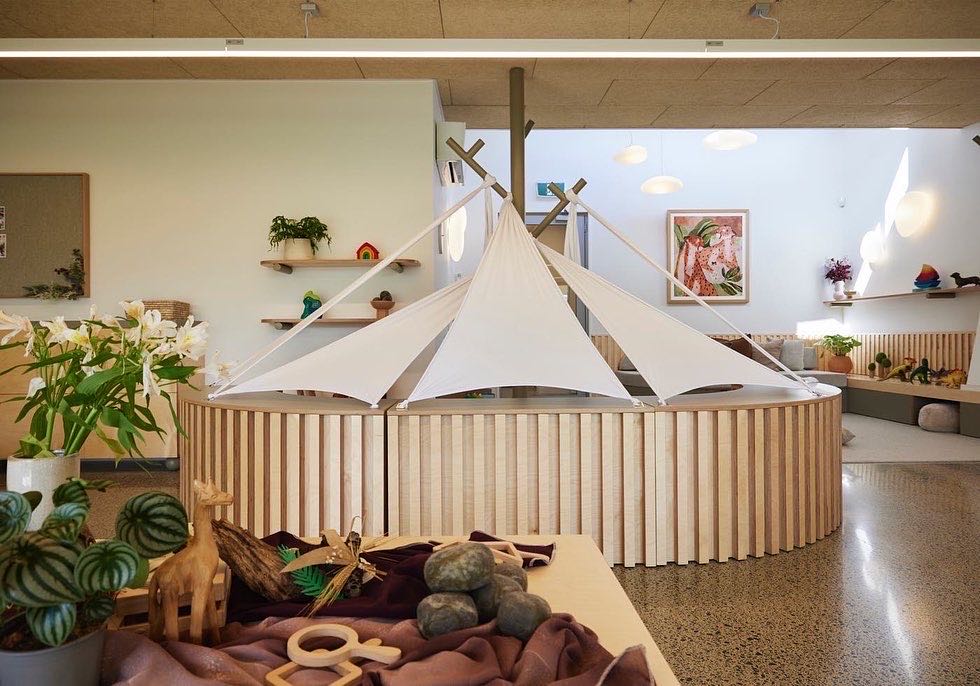
Early childhood classrooms should be learning” studios “that are more than the sum of some smaller furniture with a certain number of blocks and toys placed about. These Places or “learning studios” should be intentional, inspiring spaces of beauty, be intellectually stimulating and provide avenues for social collaborations. These new versions of classrooms called studios, will allow children the agency to explore and discover as each child seeks and finds their own learning among the awe inspiring places created with their interests in mind.
P. L. A. C. E
P is for paint.
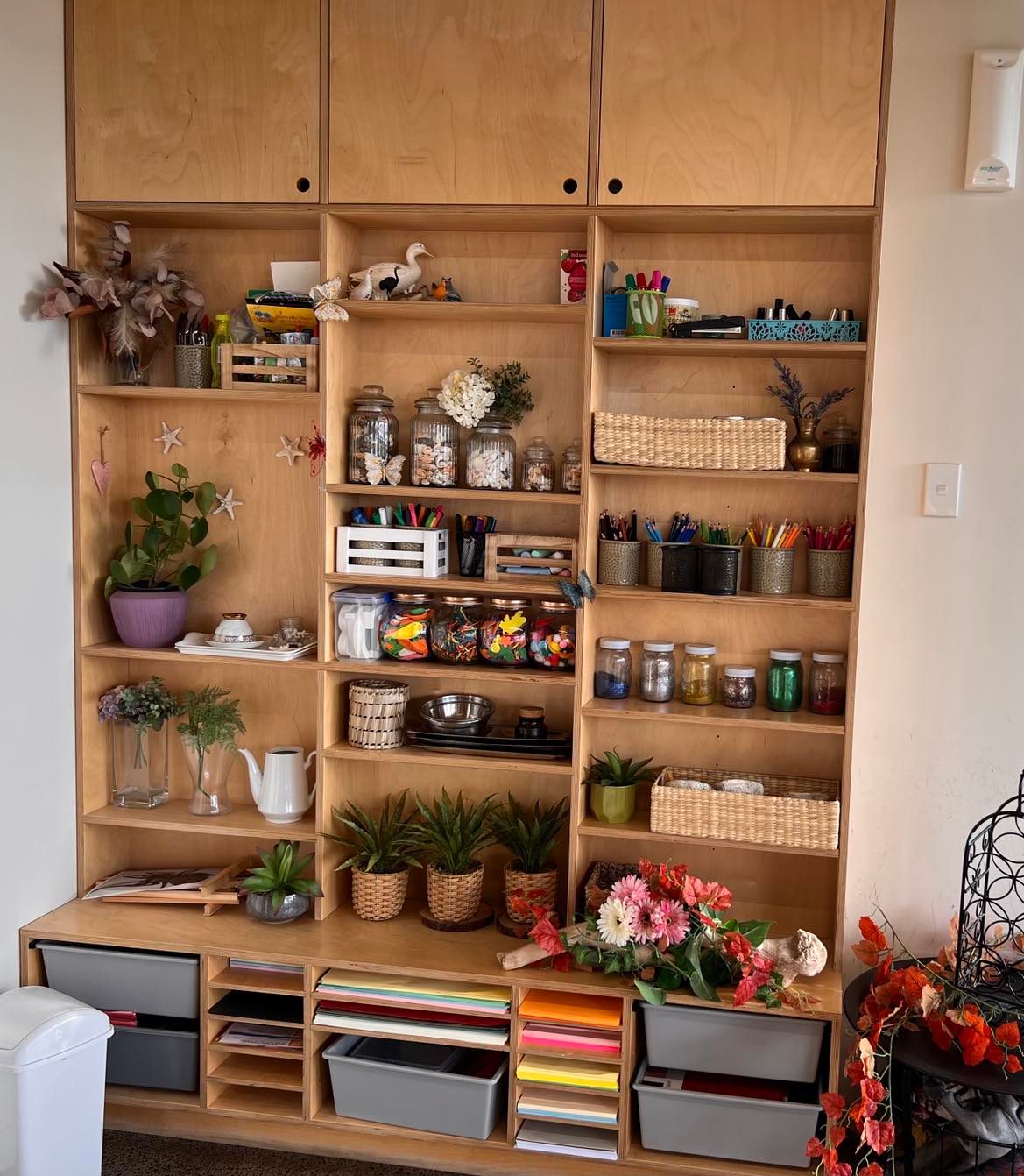
P is for paint. Clear the walls of everything, and paint the walls a natural, neutral color.
Biophilic design has been proven to enrich the lives of the people who inhabit any space. Biophilic design is an architecture approach that seeks to connect people with nature either directly or indirectly.
- Direct engagement with live plants, animals, water, air, wood or stone enriches the interactions.
- Indirect engagement using imagery of plants, trees,animals and fish. Providing scenic pictures of water (the sea, a river or a lake, woods and fields. Choosing earth tone paint for the walls is a color that you might see outside the window.)
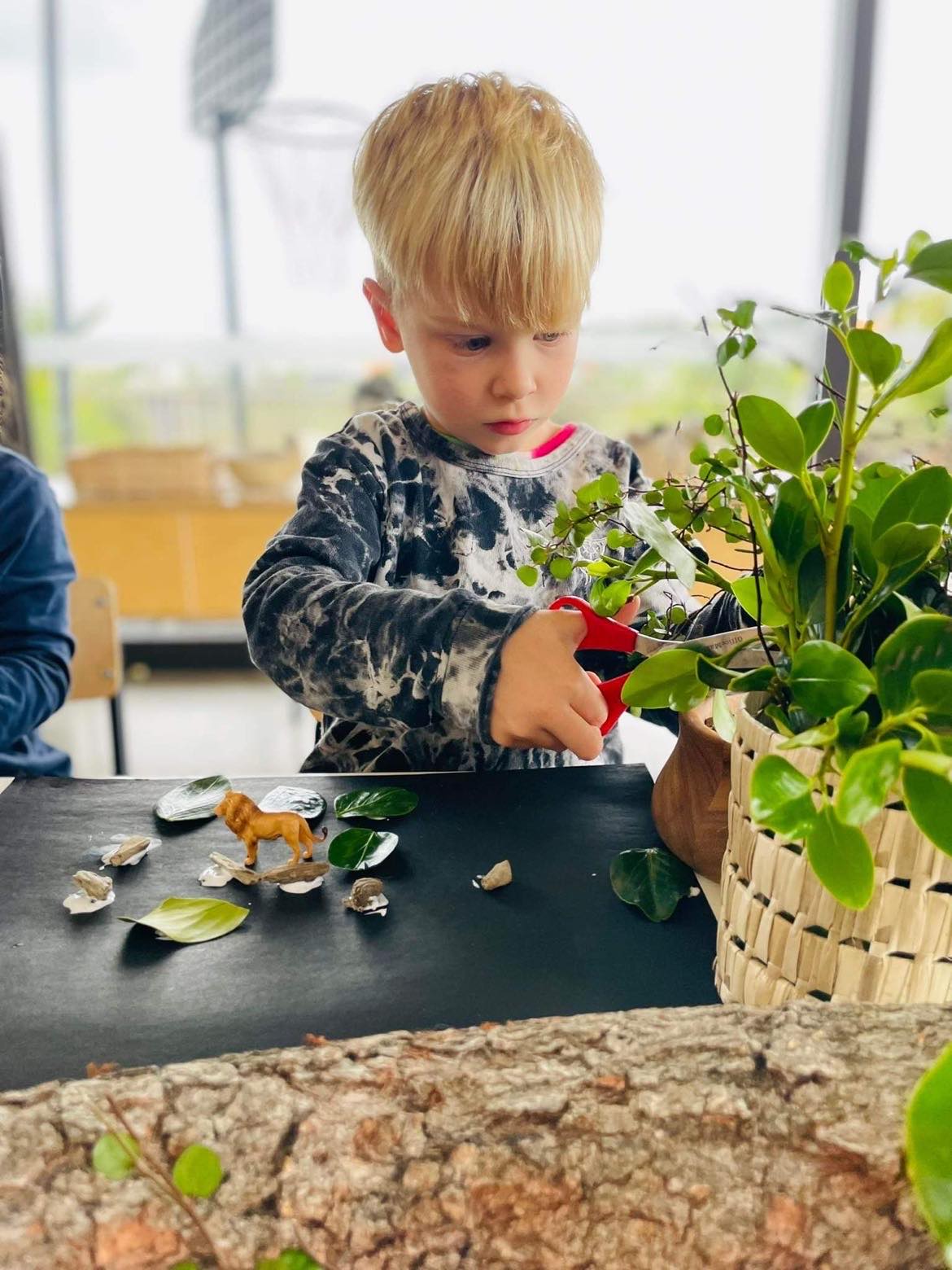
A is for authentic materials. This means, choose real things, remove all the plastic and any toys that do the thinking for the child. Choose real over pretend items for the children to play with.
Give space for children to be children in the moment. Think of what is important in their world, such as birthdays, shoes, just the right size items, small things that empower children to feel big.
- Community: being part of something, the feeling of belonging.
- AWE: feeling of adventure or wonder created by novelty and the unknown.
- Refuge: place of sanctuary or security. Everyone needs a little down time to regroup. Incorporate a space to feel alone within the room.
- Empowerment: the feeling of power to make choices. Eliminate assigned seating, allow children to choose activities, move furniture, keep their block masterpiece up, hang their own art.

PLACE tells the story of the people who inhabit that space. This room will be a place of belonging, where children create their own space, where they feel that they can retreat if they need a moment alone. There should be a bit of home and family connection demonstrated in the room but seen and felt by anyone that connects with the space.
There should be a bit of magic, a sense that something wonderful is about to happen. This room is a place where learning not only happens, it is truly felt and woven into the very being of the children, as they embrace the joy of learning.

Christine Burkholder
Share your thoughts...



